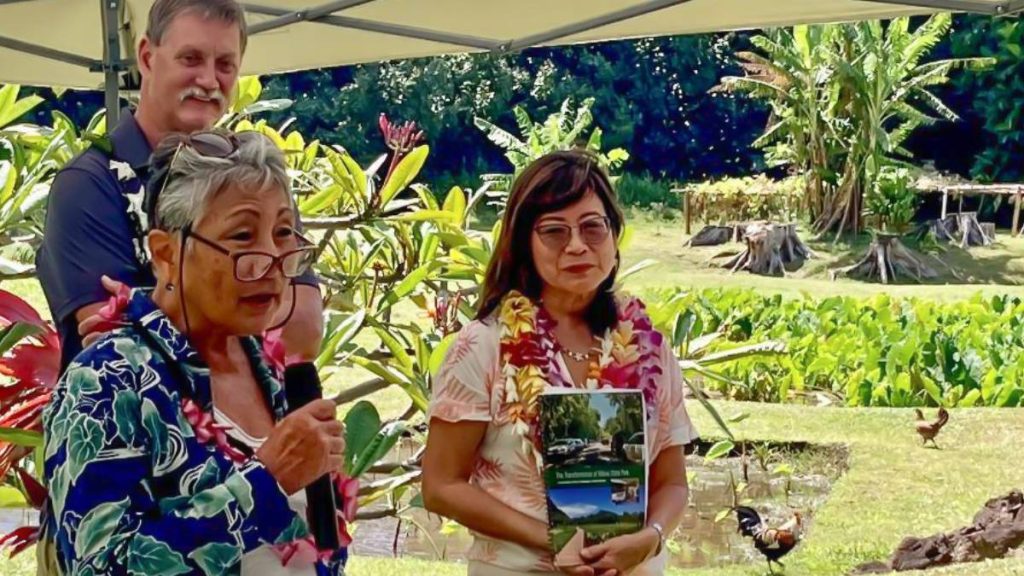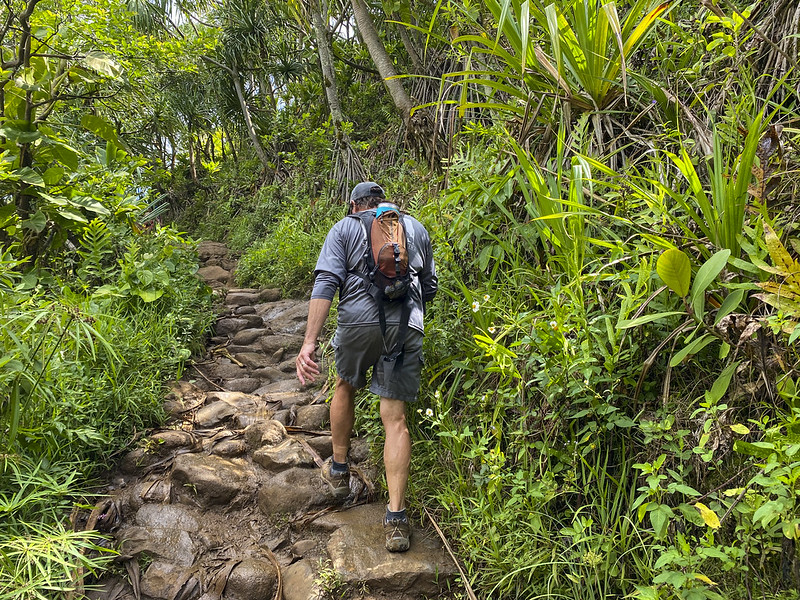System to manage tourism at Kauaʻi’s popular Hā‘ena State Park now model for State of Hawai’i

For years, Hā‘ena State Park — located at the literal end of the road on the North Shore of Kaua‘i — had been notoriously overcrowded with tourists flocking there to enjoy Keʻe Beach and hike the world-famous Kalalau Trail within the Nāpali Coast State Wilderness Park.
The daily influx of thousands of people in a small area led to congested two-lane roads, battles for parking spots and frustrated locals.
But in 2019, community groups, politicians and government officials instituted an out-of-state visitor reservation and shuttle system at Hāʻena State Park, with only Hawaiʻi residents allowed to park in the main parking lot without a reservation.
The number of daily visitors dropped dramatically, from 3,000 to 900. But it was not without some bumps in the road. In the early days of the program, some people arrived at the park gate, only to be turned away.
Now, those behind the successful experiment want to share their work with other overburdened areas throughout the Hawaiian Islands through a recently-completed 63-page handbook: “The Transformation of Hā‘ena State Park.”
On Thursday, the document was unveiled at the park by Rep. Nadine Nakamura, community leader Chipper Wichman and two officials from the Hawai‘i Department of Land and Natural Resources — Chair Dawn Chang and Division of State Parks Administrator Curt Cottrell.
“I wanted this handbook to be a springboard for future conversations about how we can scale what we did at Hā‘ena to the other hotspots throughout our state,” said Rep. Makamura, whose District 15 encompasses the North Shore of Kaua‘i and portions of the East Side.
Before the document unveiling, Hawaiʻi Gov. Josh Green stopped by Hā‘ena State Park to sign Act 72, a bill establishing a path toward mitigating overtourism impacts on state parks. The new law exempts nonprofit parking lot and concession operators from bidding requirements for operating at certain state parks.

Operators like the three nonprofit organizations that run the Hā‘ena State Park shuttle service: Hui Maka‘āinana o Makana, The Hanalei Initiative and The Waipā Foundation.
“It is my great pleasure to sign this bill at Hāʻena State Park, which is so beautiful and has immense historical and cultural importance to our state and the Hāʻena community,” Green said.
The exemption under this bill would apply only to certain operations supported by nonprofit corporations within state parks, which are designated by the Board of Land and Natural Resources as environmentally, culturally, historically or operationally unique. The exemption is modeled after the existing exemption in state law for certain county zoos, botanical gardens and county parks.
The Hāʻena State Park program started before COVID-19 struck, proving to be ahead of its time.
The pandemic, which kept tourists away from Hawaiʻi for months, showed residents on all islands what life could be like with less people. It led to a massive overhaul of how the state viewed tourism, with more management and a “Malama Hawaiʻi” or “Care for Hawaiʻi” initiative.
Wichman, a founding member of Hui Maka‘āinana o Makana, said individuals and organizations have expressed interest in learning from Hā‘ena State Park’s foray into regenerative tourism to see if it might work at other overburdened tourist favorites. They include: Waipiʻo, Pololū and Kealakekua on Hawai‘i Island; Hana and Waiʻānapana State Park on Maui; Ahupuaʻa ʻO Kahana State Park on Oʻahu; and Polihale on Kaua‘i’s West Side.

“Regenerative tourism, in my mind, is where tourism leaves a community and a resource better than when they found it. It’s regenerating. That’s what this is doing here,” Wichman said.
He gestured at the verdant taro loʻi (paddies) surrounding the tent where the handbook was unveiled.
“I know right here, this ʻāina kupuna (ancestral land) that our ancestors farmed and lived off of in harmony for hundreds and hundreds of years, it’s better today because of this model,” he said.
Before the program, the handbook said: “Cars parked along roads illegally created safety hazards and hindered emergency responders; fragile resources were trampled; illegal camping dumped tons of waste throughout the Nāpali Coast; and fisheries were depleted.”
Hāʻena parking and entry reservations are available 30 days in advance. Non-residents need to purchase both $10 parking and $5 entry reservations, which are required for everyone in the vehicle.

Parking reservations are only good for the time slots indicated. Non-residents who want to park for longer than one time slot need to purchase additional reservations.
Roundtrip shuttle rides cost $35 per passenger aged 16 and up. Tickets for passengers aged 4 to 15 are $25, and children aged three and younger ride for free on lap.
All residents of the State of Hawai‘i may enter the park without a reservation, with a valid form of ID. The Hanalei Initiative is now developing new rules to accommodate Kaua‘i locals visiting with out-of-state friends and family.
Chang said her Department of Land and Natural Resources plans to expand its role in destination management.
“We’d like to position ourselves to do this more, to develop using your Hā‘ena model, to work with communities who are ready to work with us,” she said.
Cottrell said about 10 of Hawai‘i’s 50 state parks are eligible for some form of reservation system.
“There’s this perception that you could stand up a reservation system, plug it in, turn it on and light up all the state parks with advance reservations. It really doesn’t work that way,” Cottrell said. “We’re doing destination management pretty much one park at a time, methodically and slowly … What’s really needed to do reservations is data …
“You have to set temporal capacities. You’ve got to look at transportation patterns, times of day, in which you have all that baseline knowledge.”
Waiʻānapanapa State Park and ʻĪao Valley State Monument on Maui and Diamond Head State Monument on O‘ahu now also require reservations for non-state visitors to enter.
North Shore resident and founding Maka‘āinana o Makana member Presley Wann remembers visiting Hā‘ena in the 1950s, when cattle – not cars – clogged the road in the evenings. He thinks of 1999 as the year over-tourism became apparent in the area. Back then, he never would have guessed he’d work with state government to solve the problem.
Wann said: “I think the keys to success are a really strong community, real strong community leaders and cooperative, collaborative government at all levels.”














